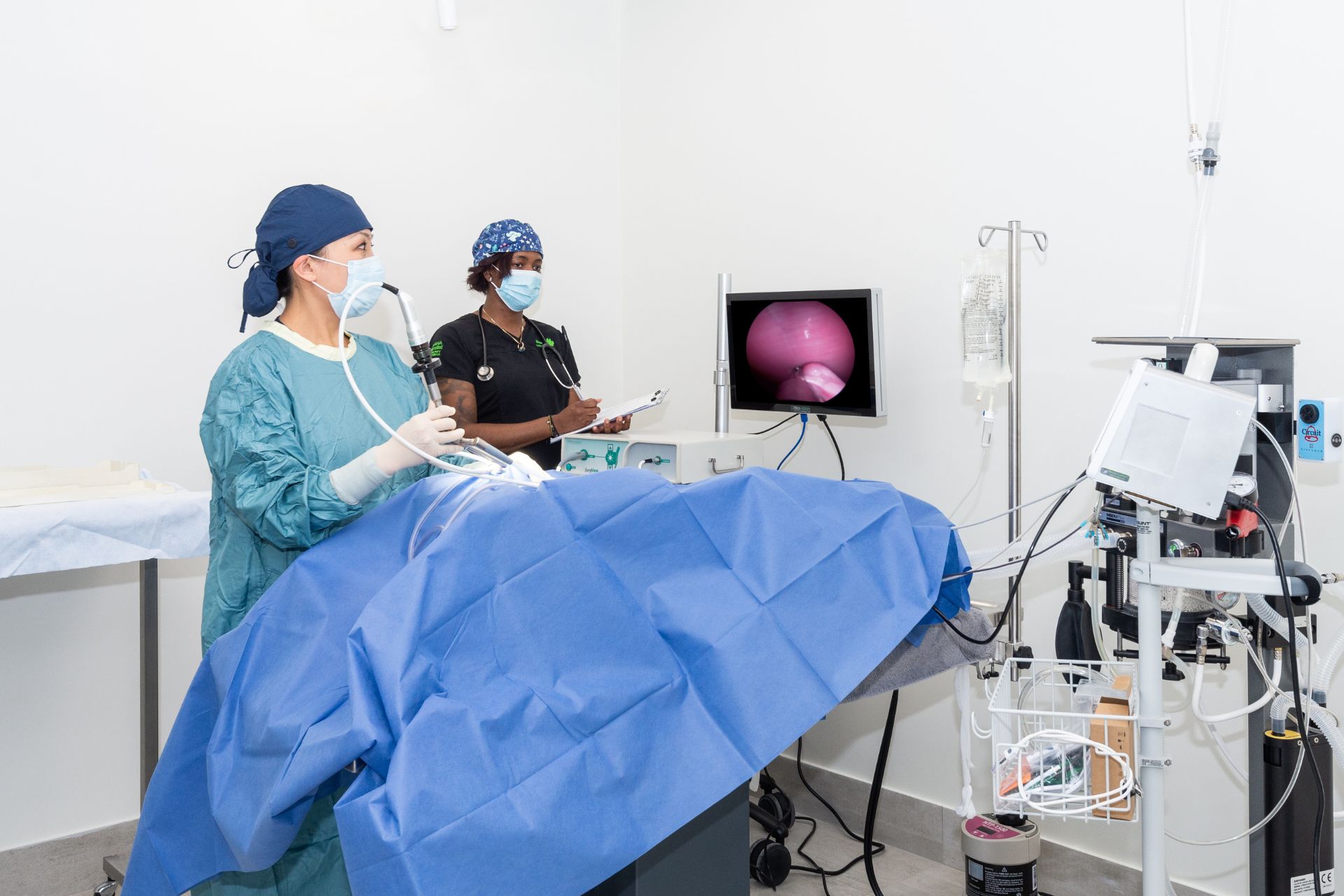Service
Laparoscopic Surgery

The saying “less is more” is certainly true of procedures carried out laparoscopically. Laparoscopy, also known as “keyhole surgery,” is a minimally invasive method of performing surgery that allows the veterinary surgeon to access the abdomen (belly) through a small incision and perform surgery using a slim tubular instrument (an endoscope) outfitted with a camera, light, and a means of cutting and cauterizing tissue.
What are the benefits of laparoscopy?
- Less pain
- Faster Recovery
- Shorter time under anesthesia
- Minimally invasive (a single, small incision)
- Better visualizing of the abdomen (via a camera sending real-time images to a large computer monitor)
- Fewer post-op complications
What can laparoscopy be used for?
Laparoscopy is suited to numerous surgical procedures including:
- Spays (removal of female reproductive organs)
- Cryptorchid neuters (removal of a testicle that failed to descend to the scrotum and remains in the abdomen, a condition referred to as cryptorchidism)
- Gastropexies (attaching the stomach to the abdominal wall to prevent life-threatening stomach twisting and bloat in certain dog breeds prone to it)
- Liver biopsies
- and more…
How is laparoscopic surgery performed?
Rather than the traditional multi-port system that requires multiple incisions and the use of more than one endoscope to provide all the tools needed to perform surgery, we use a single-port system that does it all (one endoscope with camera, lighting, cutting, and cauterizing capability). A single-port system requires just one incision, is easier and more efficient to operate, and is associated with faster and safer surgeries.
A note about how we sterilize our laparoscopic endoscopes...
We’re among the first general veterinary practices in Canada to adopt a Hydrogen Peroxide Plasma sterilizer to sterilize our endoscopes. It’s significantly safer and more environmentally friendly than the traditional alternatives that use ethylene oxide gas, a greenhouse gas that’s highly flammable and carcinogenic.
“It is my pleasure to provide a Five Star review for Southeast Oakville Veterinary Hospital. From the very first time I dropped in – to say welcome to the neighbourhood and get a tour of their beautiful new clinic – to every visit since… it has been nothing but a series of great experiences. Dr. Peters, Dr. Yan and Dr. Jakubowski have all provided stellar care to our Jolene (dog) and Angel (cat). Jolene’s laparoscopic spay and gastropexy went very smoothly with minimal scarring. And we’ve always been able to get an appointment when needed without any delay.
In addition, the staff (all of them…I won’t name names in case I leave someone out) are warm, caring and knowledgeable. Across the board.
I feel very fortunate to have SOVH nearby and have no hesitation in recommending them highly to anyone looking for a vet for their furry family members.”
In addition, the staff (all of them…I won’t name names in case I leave someone out) are warm, caring and knowledgeable. Across the board.
I feel very fortunate to have SOVH nearby and have no hesitation in recommending them highly to anyone looking for a vet for their furry family members.”




